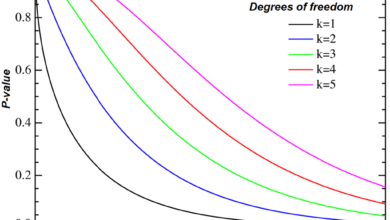Understanding what influences driver risk assessment is essential for enhancing road safety and developing effective policies. Driver risk assessment involves evaluating the likelihood of a driver being involved in an accident. Various factors, ranging from personal attributes to environmental conditions, play a crucial role in determining this risk. This article delves into the top factors that impact driver risk assessment, providing insights into how these elements interact to affect overall road safety.
1. Personal Attributes And Behaviour
Driver risk assessment heavily relies on personal attributes and behaviour. Factors such as age, experience, and driving history significantly influence the likelihood of an accident. Younger drivers, particularly those under 25, often exhibit higher risk levels due to inexperience and a tendency for risky driving behaviours. Conversely, older drivers may face challenges due to slower reaction times and potential health issues.
Additionally, behavioural factors like aggression, impatience, and susceptibility to distractions further impact driver risk assessment. For instance, individuals prone to road rage or those who frequently use mobile phones while driving are considered higher risks. Understanding these personal characteristics is crucial for accurate driver risk assessment and developing targeted interventions to mitigate risks.
2. Environmental And Road Conditions
Environmental factors and road conditions are pivotal in influencing driver risk assessment. Weather conditions such as rain, snow, fog, and ice significantly affect driving safety. Adverse weather reduces visibility, increases stopping distances, and can lead to hazardous road conditions. Drivers must adapt their driving to these conditions, but not all do so effectively, thereby raising the risk.
Road conditions, including the quality of the road surface, the presence of potholes, and the design of the road, also play a crucial role. Poorly maintained roads with inadequate signage or insufficient lighting can increase the likelihood of accidents. Urban areas with high traffic density pose different risks compared to rural areas with less traffic but higher speeds. Driver risk assessment must consider these factors to accurately evaluate potential dangers.
3. Vehicle Condition And Maintenance
The condition and maintenance of a vehicle are critical aspects of driver risk assessment. Vehicles in poor condition or those lacking regular maintenance are more likely to experience mechanical failures, which can lead to accidents. Key components such as brakes, tyres, lights, and steering systems must be in good working order to ensure safe driving.
Regular vehicle maintenance, including timely servicing and inspections, helps in identifying and addressing potential issues before they become serious problems. For example, worn-out tyres can significantly reduce traction, especially in wet conditions, leading to skidding and loss of control. Ensuring that vehicles are well-maintained reduces the risk of mechanical failures and contributes to safer driving.
For more detailed information on how vehicle maintenance impacts driving safety, refer to this comprehensive guide on vehicle maintenance.
4. Psychological And Emotional State
A driver’s psychological and emotional state profoundly affects their driving behaviour and risk levels. Stress, fatigue, and emotional distress can impair judgment, reduce reaction times, and increase the likelihood of mistakes. Drivers experiencing high levels of stress may exhibit aggressive driving behaviours or make impulsive decisions, both of which elevate risk.
Fatigue is another significant factor in driver risk assessment. Tired drivers are less alert, have slower reaction times, and may even fall asleep at the wheel, leading to catastrophic consequences. Emotional states such as anger, sadness, or excitement can also distract drivers, making them less focused on the road. Recognising the impact of psychological and emotional states is crucial for developing strategies to reduce driver risk.
5. Technological Aids And Driver Assistance Systems
Advancements in vehicle technology and driver assistance systems have transformed driver risk assessment. Features such as anti-lock braking systems (ABS), electronic stability control (ESC), lane departure warnings, and adaptive cruise control enhance driving safety by assisting drivers in maintaining control and avoiding accidents. These technologies can compensate for human errors and provide additional safety margins.
However, reliance on technology also introduces new challenges. Overconfidence in these systems can lead to complacency, where drivers might neglect their responsibilities, assuming the technology will handle all situations. It is essential to understand the limitations of these systems and ensure drivers are adequately trained to use them effectively. The integration of technology in vehicles is a double-edged sword in driver risk assessment, offering both enhanced safety and potential new risks.
For more insights on the role of technology in modern vehicles, check out this article on automotive technological advancements.
Conclusion
Accurate driver risk assessment is a multifaceted process that considers various factors, including personal attributes, environmental conditions, vehicle maintenance, psychological states, and technological aids. Understanding these elements and how they interact is essential for improving road safety and reducing accident risks. By addressing each factor comprehensively, policymakers, insurers, and drivers can work together to create safer driving environments. Effective driver risk assessment ultimately contributes to fewer accidents and safer roads for everyone.
Also Read: https://usatimenetwork.com/




